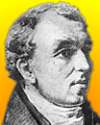David Douglas

In 1825, ten years before the fabled visit of the Beagle, a Hudson’s Bay Company supply ship sailed into the Galápagos archipelago, en route to the Pacific Northwest. Aboard was the young Scottish naturalist David Douglas, who was employed by the London Horticultural Society to collect samples of interesting plants for their burgeoning collection. During three landings on the islands, Douglas collected 45 birds and 175 plants, most of them previously unclassified by science. The Galápagos, which were to be the high point of Charles Darwin’s field experience, were only passing landmarks in Douglas’s career, in part because rainy weather on the next stage of the voyage rotted almost all of the young collector’s specimens.
What followed, however, is one of the classic natural history adventures of the nineteenth century. For most of the next decade, Douglas made his home primarily along the Columbia River and its tributaries—insofar as it can be said that he had a home. He seized every opportunity to explore new territory, forging deep into what is now western and central Canada and down the coast, by sea, as far as Monterey, California (then still part of Mexico). Everywhere he roamed he filled his journals with notes and his collecting bags with skins, seeds, and live plants. Just two years after his arrival in the region, he estimated that he had already traveled 7,032 miles by foot, horseback, and canoe.
- From the Internet Archive: Journal kept by David Douglas during his travels in North America 1823-1827, together with a particular description of thirty-three species of American oaks and eighteen species of Pinus, with appendices containing a list of the plants introduced by Douglas and an account of his death in 1834. Published under the direction of the Royal Horticultural Society (1914)
- From PlantSystematics.org, a short biography
